Preventive conservation often involves environmental monitoring, the use of archival materials and storage, Integrated Pest Management (IPM), but it can also include installation of physical barriers to protect a work of art. Christina L. Simms, Conservator of Sculpture and Objects, recently completed such a project for a preventive conservation treatment in Iowa.
The project entailed replacing one shattered laminated glass panel and installing protective barriers for the site-specific artwork Windhorse, 2009 by Nade Haley. The artwork, specific to Iowa and the ambient architecture, displays computer-altered photographic images of local area wind turbines and fields. The images were printed on laminating sheets for glass sheets. Each of the 22 image sheets were heat laminated between two panes of tempered glass. The artist had this artwork fabricated by Pulp Studio of Gardena, California.
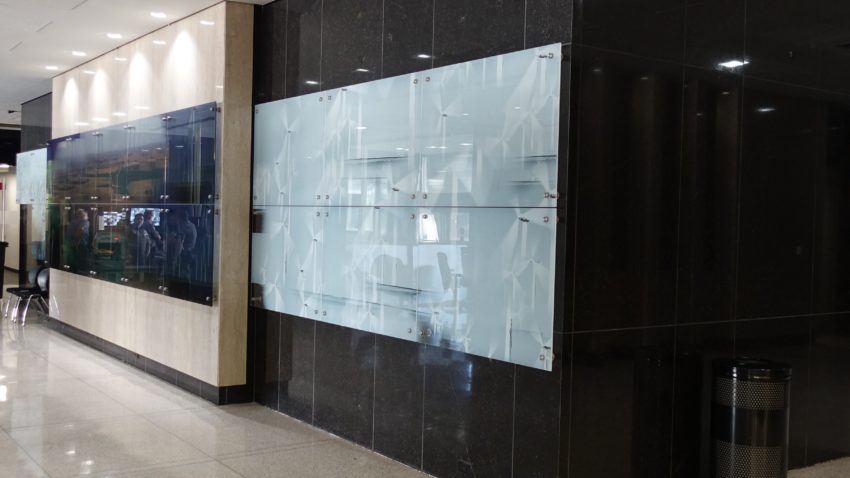
Iowa has invested in sources of renewable energy. It is the largest producer of corn and ethanol, and in 2018, “4,700 wind turbines generated 34% of the state’s electricity”, which is the second highest share in the United States. It was this investment in green technology that inspired artist, Nade Haley to create Windhorse which features images of both corn fields and wind turbines.
But accidents happen.
Surfaces of tempered glass are capable of strong surface impacts without damage. However, such glass is highly susceptible to complete shattering if vulnerable, exposed corners receive even a light impact. This is exactly what happened to a lower panel of Windhorse after it was impacted by a low cart turning a corner, tapping a glass corner and shattering a panel after nearly 10 years of being installed.
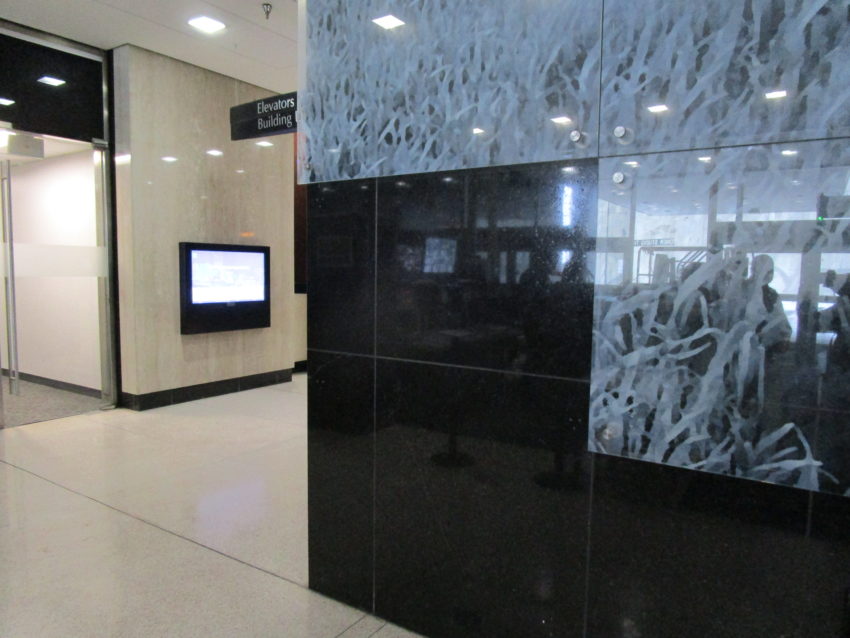
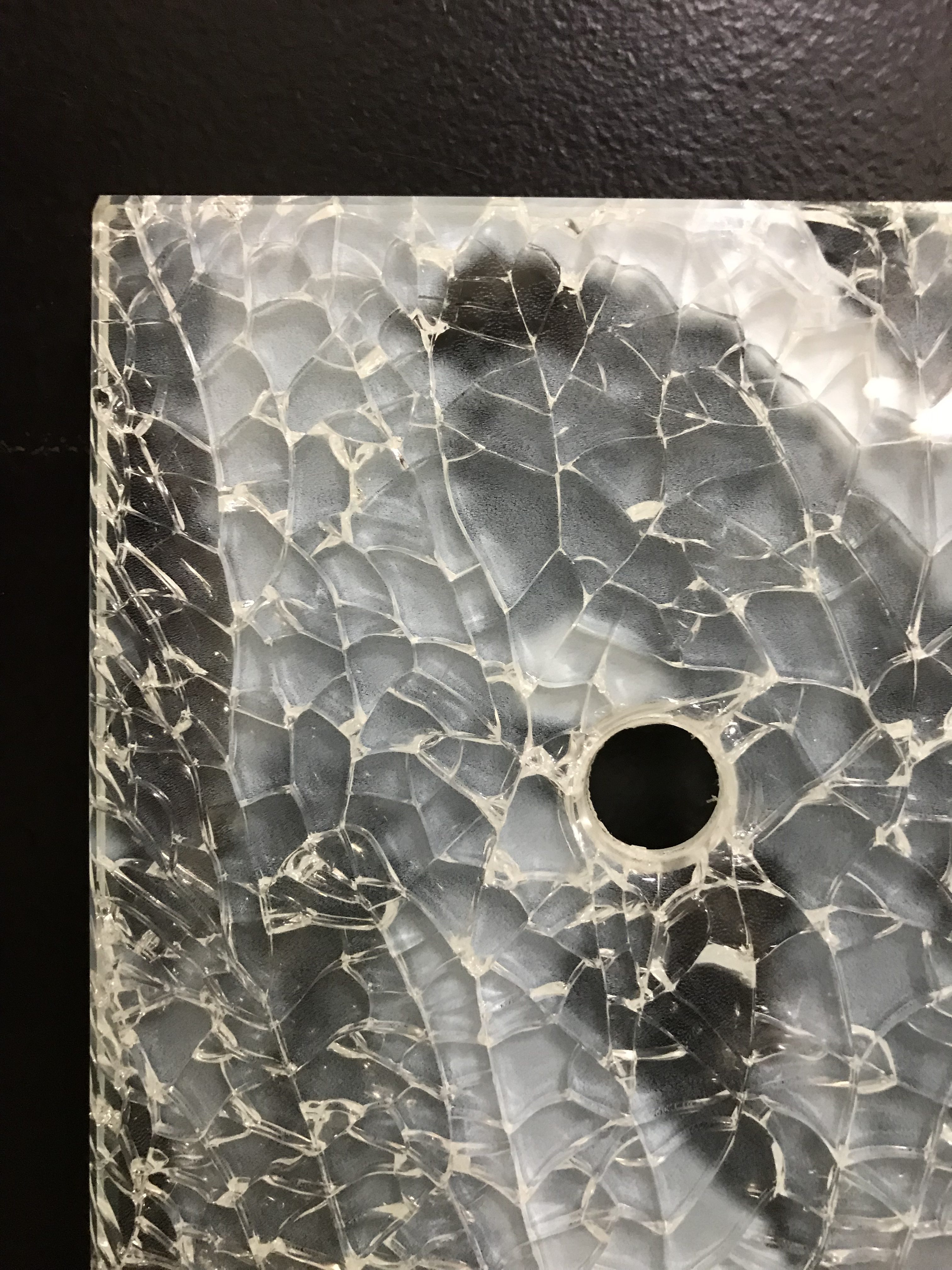
In order to prevent this in the future, Robert Lodge, Conservator and President of McKay Lodge Conservation Laboratory, worked with the original fabricator Pulp Studio, Inc. to reprint the broken glass panel, and worked with a local glass company to design a barricade system that would protect the corners or the artwork, but not adversely impact the aesthetic of the artwork at the same time.
The protective glass barrier was designed to complement the artwork, not interfere with it aesthetically. The design met the approval of the owner, the U.S. General Services Administration’s fine arts office; the artist is deceased and no authoritative sources could be found to represent the artist in this decision.
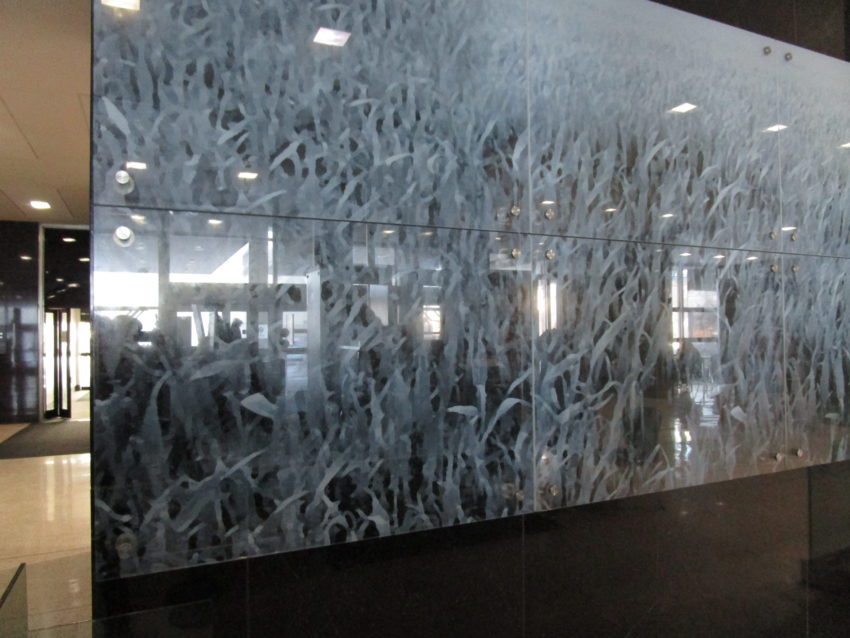
Conservator Simms then traveled onsite to manage the preventive conservation project in Iowa. She supervised the installation of the newly printed glass art panel and the installation of four protective double-tempered glass barriers fitted with stainless steel rails.
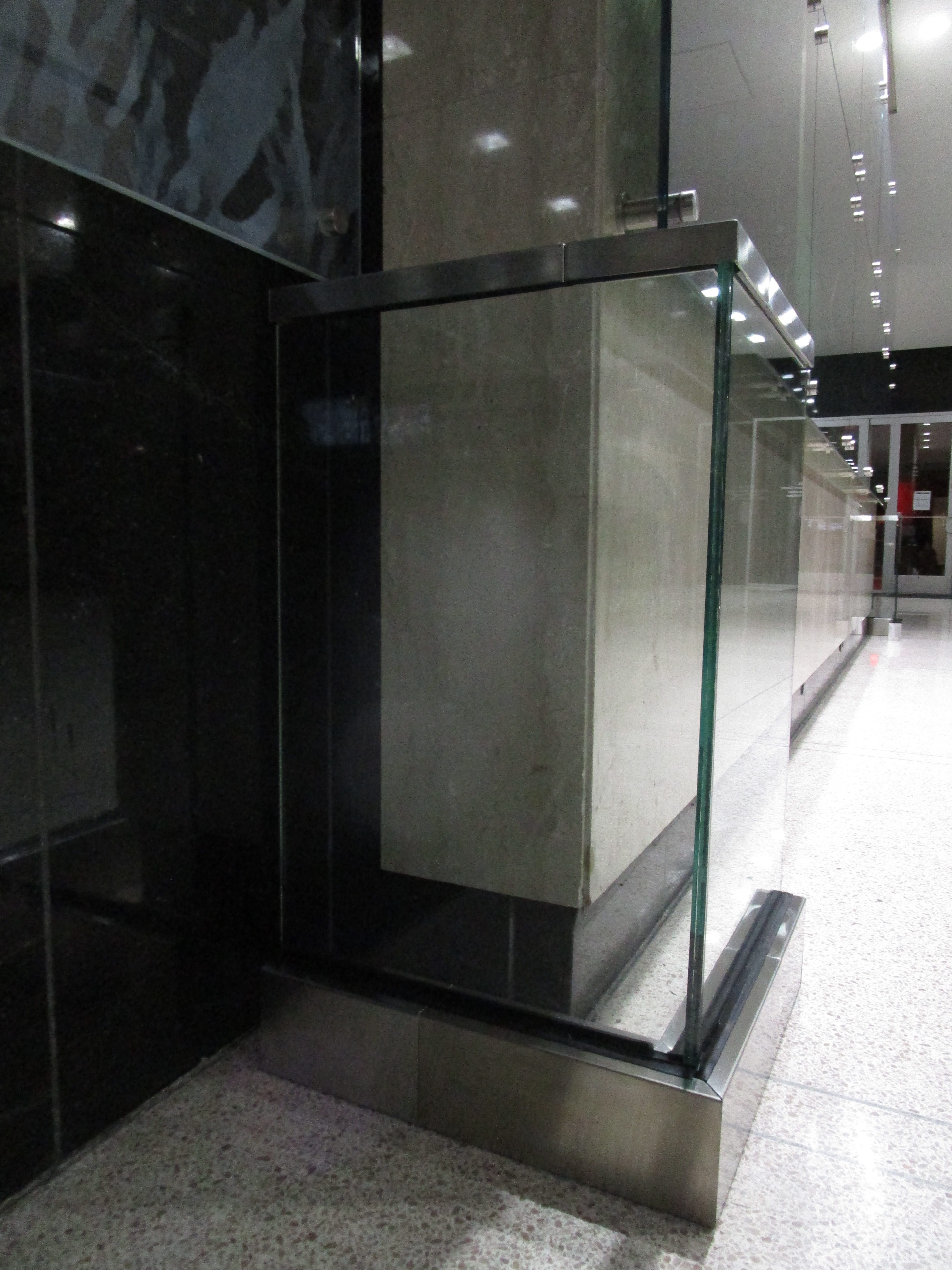
Each corner of the artwork had a barrier installed, preventing an impact from a cart or similar object in the future. In addition, a maintenance cleaning was performed with dry cleaning methods and an aqueous-based solution to remove accumulated dust and surface accretions.

The result after treatment was a preventive conservation approach to avoid future damage from impacts, but the new protective barriers did not cover or affect the appearance of the artwork.
